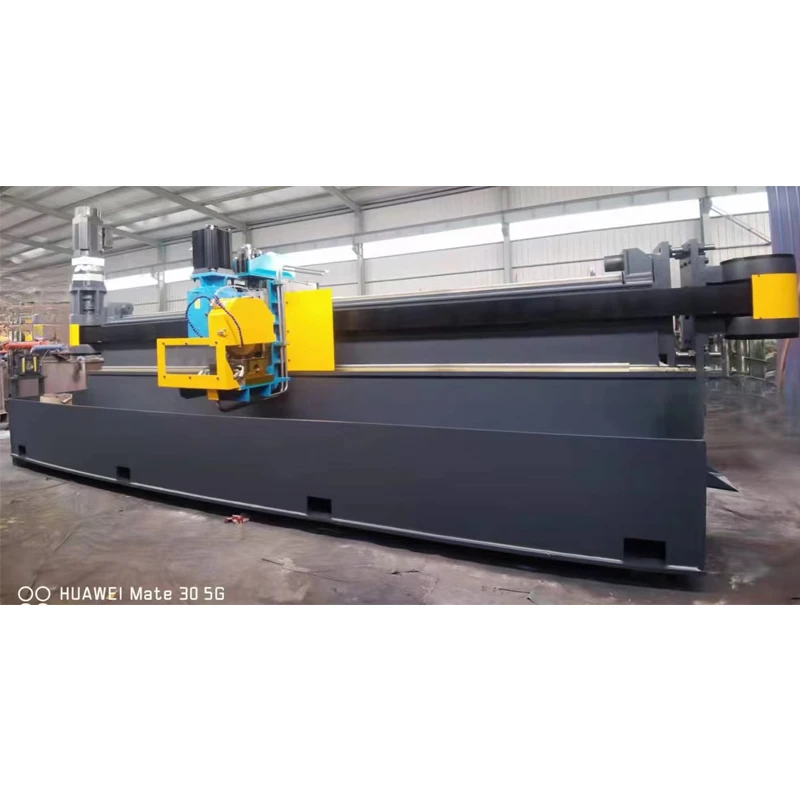conduit pipe manufacturing machine
Conduit Pipe Manufacturing Machine Revolutionizing the Industry
In recent years, the demand for conduit pipes has surged due to the rapid expansion of infrastructure development and construction projects globally. As a result, the manufacturing processes behind these essential components have evolved significantly, with advanced conduit pipe manufacturing machines taking center stage. This article explores the technology, benefits, and impact of conduit pipe manufacturing machines on the construction industry.
Understanding Conduit Pipes and Their Applications
Conduit pipes are essential for protecting electrical wiring and communication lines. They provide a safe pathway for cables, which helps in preventing electrical hazards and improving durability against various environmental factors. Typically made from materials like PVC, HDPE, and metal, these pipes come in various sizes and types to suit different applications—from residential wiring to large-scale industrial installations.
The Evolution of Manufacturing Processes
Traditionally, conduit pipes were manufactured through time-consuming and labor-intensive processes. These methods not only slowed down production rates but also limited the precision and consistency of the final products. However, the advent of modern manufacturing machines has transformed the landscape, enabling manufacturers to produce high-quality conduit pipes efficiently and cost-effectively.
Components of Conduit Pipe Manufacturing Machines
Modern conduit pipe manufacturing machines typically comprise several key components that work in concert to streamline the production process
1. Extruder At the heart of any conduit pipe manufacturing machine is the extruder. This component melts raw plastic or other materials and shapes them into a pipe form. Advanced extruders are equipped with temperature control systems to ensure that the material is processed uniformly.
2. Die Head The die head shapes the molten material into the desired pipe diameter and wall thickness. With customizable die heads, manufacturers can produce pipes of various sizes to meet specific market requirements.
3. Cooling System Once the pipe is extruded, it needs to be cooled rapidly to retain its shape. Efficient cooling systems utilize water baths or air cooling methods to ensure that the pipes reach their final form without warping.
conduit pipe manufacturing machine

4. Cutting and Packaging Mechanism After cooling, pipes are cut to the desired lengths. Automated cutting systems enhance precision and speed, which is vital in maintaining production lines. Finally, the pipes are packaged for distribution, often in bulk quantities for wholesale.
Benefits of Automated Manufacturing
The introduction of automation in the manufacturing of conduit pipes has several advantages
- Increased Productivity By reducing manual labor and speeding up the production processes, manufacturers can significantly increase their output. Automated machines can operate continuously, leading to higher production rates.
- Improved Quality Control With precise machinery, manufacturers can maintain tight tolerances and ensure that every pipe meets quality standards. This reduction in defects translates to fewer returns and higher customer satisfaction.
- Cost Efficiency By streamlining processes and reducing waste, conduit pipe manufacturing machines can lower production costs. This cost-saving can be passed on to customers, making conduit pipes more affordable.
- Flexibility and Customization Many modern manufacturing machines allow for easy adjustments, enabling manufacturers to switch between different pipe sizes and specifications quickly. This flexibility helps companies respond rapidly to changing market demands.
Environmental Considerations
As the construction industry grapples with sustainability concerns, conduit pipe manufacturers are adopting eco-friendly practices. Modern manufacturing machines are designed to minimize waste and energy consumption. Furthermore, manufacturers are increasingly using recyclable materials, thereby reducing their environmental footprint.
Conclusion
The conduit pipe manufacturing machine has become a cornerstone of modern infrastructure development. By leveraging advanced technologies and automation, manufacturers are not only meeting the growing demand for conduit pipes but also enhancing the overall quality and efficiency of production. As the industry continues to evolve, these machines will play a crucial role in ensuring that the construction sector remains sustainable and capable of supporting future growth. With the right investment in technology and processes, the future of conduit pipe manufacturing looks promising, paving the way for safer and more reliable electrical and communication systems worldwide.
-
High Frequency Straight Seam Welded Pipe Production Line-BzZhou Xinghua Machinery Equipment Manufacturing Co., LTD.|Precision Welding, High EfficiencyNewsJul.30,2025
-
High Frequency Straight Seam Welded Pipe Production Line|BzZhou Xinghua|Precision Welding&EfficiencyNewsJul.30,2025
-
High Frequency Straight Seam Welded Pipe Production Line - BzZhou Xinghua|Precision Engineering&EfficiencyNewsJul.30,2025
-
High-Frequency Straight Seam Welded Pipe Production Line-BzZhou Xinghua Machinery Equipment Manufacturing Co., LTD.NewsJul.30,2025
-
High-Frequency Straight Seam Welded Pipe Production Line-BzZhou Xinghua Machinery Equipment Manufacturing Co., LTD.|Precision Manufacturing, High EfficiencyNewsJul.30,2025
-
High Frequency Straight Seam Welded Pipe Production Line-BzZhou Xinghua Machinery Equipment Manufacturing Co., LTD.|Precision Steel Pipe Manufacturing&Industrial EfficiencyNewsJul.29,2025


